I’ve Heard of EMDR. What’s Brainspotting?
Great question! At LifeSpring, we’ve been asked this question so many times that we realized we needed a blog to more thoroughly answer this question. This may end up being more information than you needed (or wanted), but I’m confident that you’ll get answers to your Brainspotting questions.
The Discovery of Brainspotting & It’s Connection to EMDR
Brainspotting (BSP) is a really powerful treatment modality that was discovered by David Grand in 2003. David Grand was a “natural flow” EMDR trainer and clinician, and he discovered Brainspotting while doing EMDR with one of his current clients. While doing EMDR, he noticed that his client’s eyes wobbled every time her eyes came across a particular spot in her visual field. He decided to stay on this particular spot, rather than continuing to move his fingers from side to side as he typically would with EMDR, and in turn, his client began processing a lot of unresolved material.
This was significant in that David Grand had been working regularly with this client, and the material that arose on this spot was information that they both thought had been previously resolved. Not only that, but the particular issue that this client was working on ended up getting undoubtedly resolved immediately after that session. As you can see, there is a historical connection between EMDR and Brainspotting. They share other similarities as well, but I’ll save that for another article. For now, here’s some information you might find helpful.
How Brainspotting Works
As stated on the Brainspotting.com website, “Brainspotting locates points in the client’s visual field that help to access unprocessed trauma in the subcortical brain.” Essentially, when you participate in Brainspotting, your therapist will help you identify one (sometimes more) spots in your visual field where you can best process difficult emotions, memories, or experiences. Don’t get tripped up by the use of the word trauma above. While Brainspotting is most commonly known for treating trauma, it is not only used for treating trauma. It can also be used to help people process grief/loss, depression, anxiety, chronic pain, racial trauma and other difficult life experiences.
We find the Brainspot. Then what?
After you and your therapist find the Brainspot, you will stay on that spot for an extended period of time. During that time, your only job is to quietly notice the thoughts, feelings, and physical sensations that arise. The content that needs to be processed will naturally arise. Even though you may have never done Brainspotting before, your body knows exactly what to do. If you notice anything significant that you want to share with your therapist, you certainly may. If you simply want to remain quiet, that’s OK too. You’ll still process the material, even without having to talk.
How do I know when Brainspotting has resolved my concern?
At the beginning and end of each Brainspotting session, your therapist will ask you to rate the intensity of the feeling/sensation you are experiencing. This is one of the ways that we know someone’s activation level is lower at the end of a Brainspotting session. In Brainspotting, we have another way of checking to see how you are feeling in relation to the issue you are processing, and we call this “squeezing the lemon.” While everyone is different, the most common reports that I hear from people at the end of the session are, “I don’t feel the same way when I think about that situation any more,” “The situation seems smaller now, “ The situation seems further away now,” or “I know this event happened, but I don’t feel the same way when I think about it anymore.”
There are other times when the situation is not completely resolved, but we’ve run out of time in the session. While someone may leave the session feeling better than when they started it, there are still times when we have more work to do on that particular topic. After the session, your brain will continue to process, and you and your therapist can pick up and continue processing based on where you are at the time of your next visit.
Search Our Other Blogs!
Interested in Brainspotting for Anxiety, Depression, Grief and Loss, or Trauma?
If you’re a Marylander who knows that counseling is the direction you need to take, the therapists at LifeSpring Counseling Services are here to help. We offer online counseling services for mindfulness, depression, anxiety, trauma, and grief and loss. We also offer Brainspotting as a specialized service, and Brainspotting can be done online, too!
Here’s how you can get started! Brainspotting for anxiety, depression, grief and loss, and trauma aren’t the only services offered at our Maryland office
The counselors and social workers at our Maryland office also offer counseling services for trauma, grief and loss, boundary setting, communication skills, and difficult life transitions. We also offer specialized counseling services including Brainspotting and spiritually-integrated counseling. Because we are located next to several local universities, we also work with college students and international students.
Written By: Melissa Wesner, LCPC
Photos: Pixabay, Samson Katt, and Karolina Grabowska on Pexels
Date of Download: 1/11/2021



